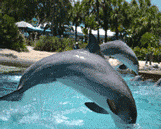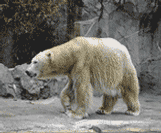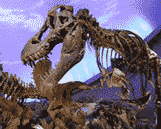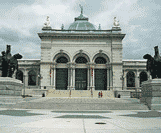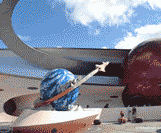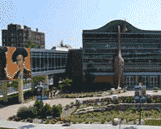Facts about Bedrock
Posted by Admin / in Science Facts
The Earth has a layer of bedrock near the surface called the crust. The thickest crust is under the continents. Crust here is known as the continental crust and is over 40 miles thick in areas. The thinnest crust is under the oceans. Crust here is known as the oceanic crust and is as thin as 4-6 miles. Scientists study the bedrock by coring deep into the earth and by studying the bedrock plate movement during earthquakes.
The types of bedrock are grouped by how they were formed. The three types of bedrock are igneous, sedimentary and metamorphic.
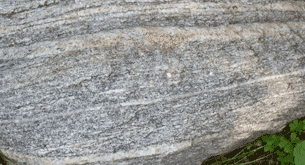
What type of bedrock is this rock?
Igneous Bedrock

Coarse-grained igneous bedrock
Igneous bedrock is formed from magna or lava that is cooled. The rate of cooling and minerals introduced when the magma is still in its liquid form determine the type of igneous bedrock formed. Igneous rocks are mainly made up of silicate. The common types of igneous rocks include the glass-like basalt, which is fine-grained, and the coarse-grained granite, which is used in homes as kitchen and bath countertops.
IGNEOUS ROCK FACTS
-
Igneous rocks are formed from hot molten liquid called magma.
-
There are 2 groups of igneous rock: intrusive and extrusive
-
When magma crystallizes within the Earth's surface intrusive rock results
-
When magma crystallizes at the Earth's surface extrusive rock results
-
Igneous rocks are also classified by grain size: fine grained or coarse-grained
-
Coarse-grained igneous rock is typically intrusive and usually lighter in color
-
Fine-grained igneous rock is typically extrusive and usually darker in color
Sedimentary Bedrock

Limestone Sedimentary Bedrock
Sandstone, limestone, shale, mudstone, chalk, salt stone, dolomite and gypsum are all common types of sedimentary rocks. Sedimentary bedrock is formed when smaller particles are bonded together either by chemical bonding or a combination of chemical reaction and pressure. The pressure is typically due to water or soil on top of the forming sedimentary rock. Chemical bonding is a result of different chemistry reactions. The most common chemical bonding in sedimentary rock is calcium carbonate. Coal is a subcategory of sedimentary rock. Coal is typically formed in swamp or peat beds where trees and other vegetation cover the bed and energy from the sun is absorbed, increasing the potential energy of the material. The peat bed is then covered while heat and pressure is applied until coal results.
SEDIMENTARY ROCK FACTS
-
Sedimentary rocks are formed from particles of preexisting rocks
-
Sedimentary bedrock is divided into 2 groups: detrial and chemical
-
Detrial sedimentary rock occurs after physical break-down of old rocks and particles that form new rock.
-
chemical sedimentary rock is the result of chemical break-down of old rocks and particles that form new rock.
-
The 3 most common types of sedimentary rocks are limestone, shale and sandstone.
-
Shale is the most common sedimentary rock.
-
Sedimentary rock is found in only about 5% of the Earth's crust.
-
75% of the exposed bedrock at the Earth's surface is sedimentary rock
Metamorphic Bedrock
Metamorphic bedrock is formed when igneous, sedimentary, or other metamorphic rocks are changed by experiencing high amounts of heat and pressure. Formation of metamorphic rock may also include mixing with hot fluids. During formation, the rocks experience high heat, but not enough to cause the rock to melt. This type of bedrock is typically formed deep underground or in locations where large bedrock plates are smashing together. Metamorphic bedrock gives geologists (scientists who study rocks) clues about how it was formed. Geologists can sometimes figure out how the land was formed by studying the metamorphic rocks in an area. Some of the most useful, and also most beautiful types of rock are metamorphic bedrock.
METAMORPHIC ROCK FACTS
-
Metamorphic rock is classified by 3 main formation components including: mineral composition, heat during formation and pressure during formation
-
The temperature and pressure needed to create metamorphic bedrock results in a very strong rock that resists erosion.
-
There are two sizes of metamorphic rock formations: regional and contact
-
Regional metamorphism occurs over a large region, such as when two continental plants collide.
-
Contact metamorphism occurs over a small region.
-
Carrara marble from Italy is considered the most perfect marble in the world. Many famous sculptures were created using Carrara marble.
-
Common types of metamorphic rock: marble, gneiss, slate, schist, phyllite, mica, serpentinite
Interesting Bedrock Facts
- Bedrock is not impervious, meaning that water can actually pass through bedrock. The amount of water that passes through bedrock is based on the type of bedrock and the number and size of the bedding planes (areas where the rock formed together) in the rock.
- Bedrock has been used throughout history for buildings and structures such as bridges. The oldest remaining bridges in the world found in Europe and China are made from bedrock cut to make an arch shape.
- The Taj Mahal in India is made from white marble, which is an expensive bedrock, used to make buildings look nice. It took up to 20,000 workers 22 years to build and is now considered one of the 8 wonders of the world.
- The David is considered one of the best sculptures ever created. It was sculpted in marble by Michelangelo between 1501 and 1504, is over 12 feet tall (over 4 meters) and is now on display in Florence, Italy.

